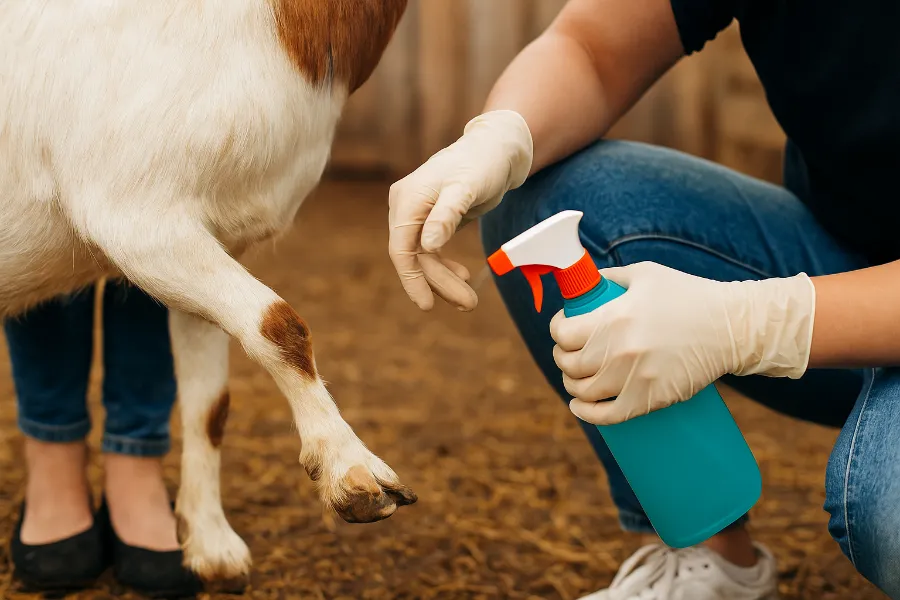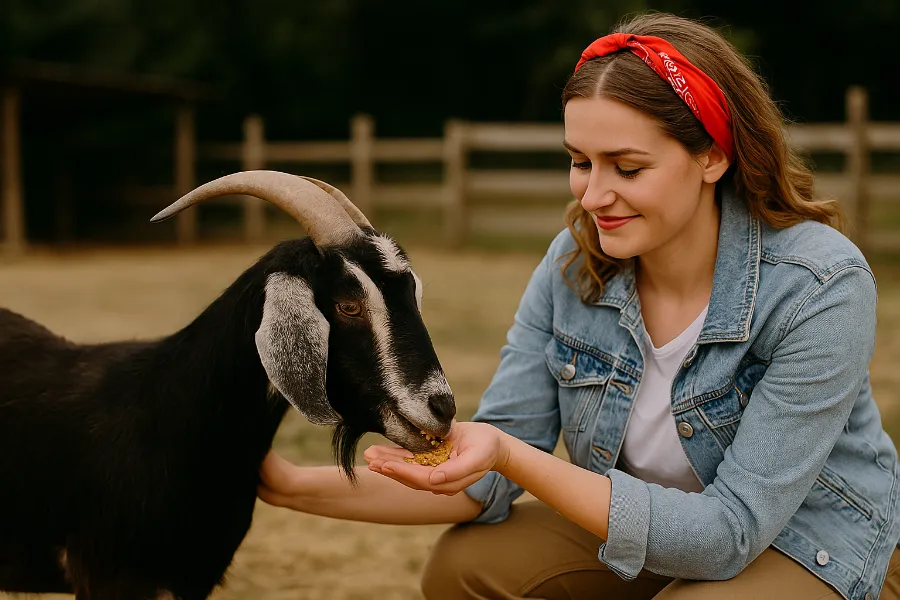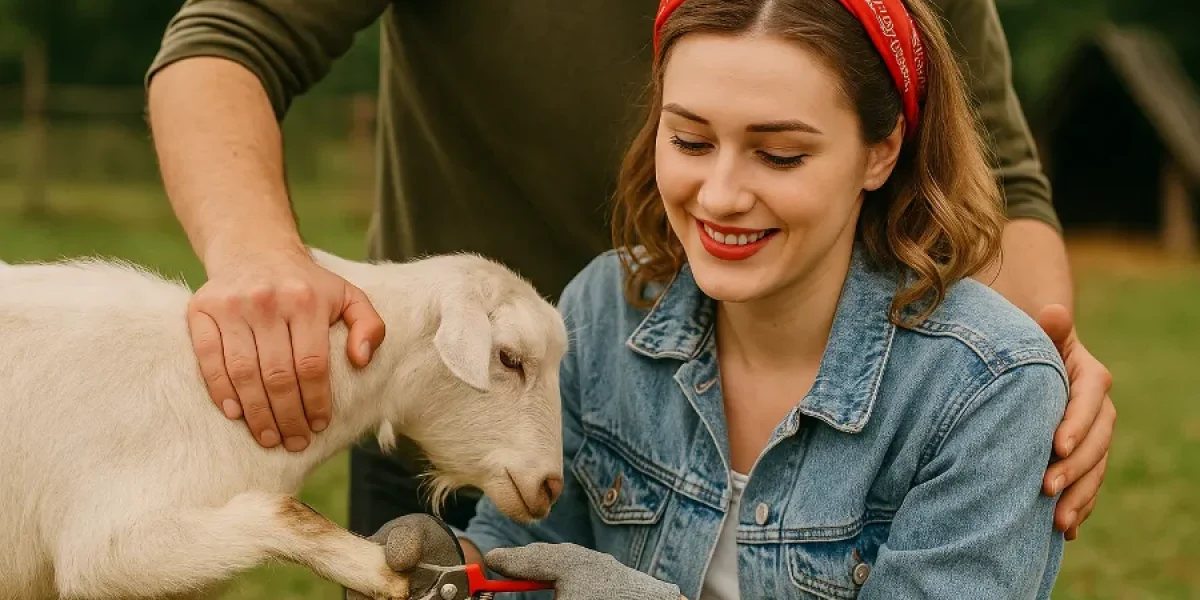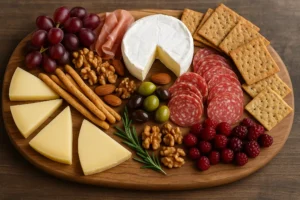When I first got into goats, I quickly realized one thing: goat hoof trimming isn’t optional. It’s one of those steady, behind-the-scenes chores that keeps a herd healthy and happy. At first, it felt intimidating—like I might mess it up. But over time, I learned it’s not only manageable but actually satisfying. Think of it as giving your goats a much-needed pedicure that prevents pain, keeps them moving with ease, and supports their overall health.
In this post, I’m sharing everything I’ve learned over the years: how goat hooves grow, how hoof care fits into overall goat care, how to prevent goat hoof rot, which hoof trimming tools actually help, and what to look for in hoof trimmers for goats.
Goat Hooves: The Foundation of Health

Goat hooves grow continuously, just like our fingernails. In the wild, goats roam rocky hillsides where the terrain naturally wears their hooves down. But in domestic settings—soft pastures, barns, or dry lots—there’s little natural abrasion. That means hooves can grow long, curl under, and trap debris if we don’t step in.
Each hoof has four main parts:
- Hoof wall: the tough outer shell
- Heel: the back portion of the hoof
- Sole: the bottom surface
- Soft tissue/frog: the fleshy interior you want to avoid cutting into
The goal of trimming is simple: keep the hoof wall level with the sole so goats stand evenly. Once I understood that, trimming felt a lot less mysterious.
Goat Care: Where Trimming Fits In
Trimming is one piece of the bigger goat care puzzle. It goes right alongside feeding, parasite control, and keeping pens clean. When hooves are well-maintained:
- Goats move comfortably and play without limping
- Joints and tendons stay aligned, reducing strain
- Stress levels drop (which boosts milk yield or weight gain)
- The risk of serious hoof diseases plummets
Skipping hoof trims is like ignoring dental cleanings—it may not cause problems right away, but eventually, it catches up.
Goat Hoof Rot: A Problem You Don’t Want
If there’s one hoof issue every goat owner dreads, it’s goat hoof rot. This bacterial infection creeps in when hooves stay overgrown, damp, and packed with manure. It’s painful and contagious if you’re not careful.
Signs I watch for:
- A foul odor coming from the hoof
- Black, soft, or decaying tissue
- Goats limping or refusing to bear weight
How I prevent it:
- Trim regularly so hooves don’t curl and trap moisture
- Keep pens dry and bedding clean
- Disinfect tools between goats
- Add gravel or lime in high-traffic areas to cut down on mud
Catching hoof rot early means I can trim away diseased tissue, disinfect thoroughly, and keep the goat in a dry area until healed. Neglecting it, on the other hand, leads to drawn-out treatments and suffering.
Hoof Trimming Tools You’ll Actually Use
When I first started, I bought a random assortment of gear. Some worked, some didn’t. Here’s what I actually reach for every trimming session:
| Tool | Why I Use It | Notes |
|---|---|---|
| Hoof trimmers (shears) | To cut the hoof wall | Go for ones made for goats—they’re sharper and easier |
| Hoof knife | To clean out folds or overgrowth | Use sparingly, always carefully |
| Rasp/file | To smooth and level rough spots | Especially helpful with hard hooves |
| Hoof pick/brush | To clear dirt and manure | Essential before cutting |
| Gloves | Protects hands | I never trim without them |
| Disinfectant/iodine | Cleans tools and treats nicks | Quick spray keeps things sanitary |
| Trimming/milking stand | Holds goats steady | A lifesaver with stubborn animals |
Over the years, I’ve learned that a few reliable tools beat a whole box of gimmicks every time.
Hoof Trimmers for Goats: Picking the Right Ones
The heart of your kit is good hoof trimmers for goats. I’ve tried cheap pairs that dulled after two goats and heavier-duty ones that felt clunky. What I look for now:
- Sharp, spring-loaded blades that slice instead of crush
- Ergonomic handles that don’t wear out my grip
- Durability (cheap metal isn’t worth it)
- Easy to clean and disinfect between goats
I trim a dozen goats regularly, so I don’t skimp on trimmers anymore. They make the difference between a smooth, safe job and a frustrating one.
How Often I Trim Goat Hooves
The question I hear most is: how often should hooves be trimmed? The sweet spot for most of my herd is every 4–6 weeks. But I also check monthly, because some goats need more frequent attention.
Factors that change frequency:
- Breed: some have softer hooves that grow faster
- Diet: grain-heavy diets can speed up growth
- Terrain: rocky ground naturally files hooves, pastures don’t
- Age: older or less active goats may need more care
If I see hooves curling, flaring, or hear clicking when they walk, I don’t wait—I trim right away.
My Step-by-Step Goat Hoof Trimming Routine
Here’s how I make trimming manageable:
- Secure the goat – stand or helper holding them steady
- Clean the hoof – pick out dirt, rocks, or manure
- Inspect – check the heel, wall, and sole for overgrowth or infection
- Trim the wall – cut small slices until level with the sole
- Check the heel – it shouldn’t be longer than the toe
- Pare folds (if needed) – only if there’s trapped debris, carefully
- Smooth the hoof – rasp or file until even
- Disinfect – treat any nicks, and spray tools before the next goat
- Reward – a little grain or a scratch for patience goes a long way
When I first started, it could take me 15 minutes per goat. Now, with practice, it’s closer to 5–7 minutes each.

Mistakes I Learned From
I’ll be honest—hoof trimming humbled me at first. Here are the mistakes I made (so maybe you won’t):
- Cutting too deep and hitting the quick
- Letting hooves grow too long before trimming
- Using dull blades that crushed instead of cutting
- Forgetting to clean tools between goats
- Wrestling goats on the ground instead of using a stand
The good news is goats are forgiving, and trimming gets easier each time.
Seasonal Hoof Care Adjustments
I’ve noticed hoof growth and issues shift with the seasons:
- Spring: hooves grow quickly on lush grass—trim more often
- Summer: dry, hard hooves need sharper tools
- Fall: mud raises hoof rot risks—check more frequently
- Winter: growth slows, but packed bedding can still cause problems
Paying attention to the seasons has helped me prevent small issues before they become big ones.
Closing Thoughts on Goat Hoof Trimming
Trimming hooves may never be the most glamorous part of raising goats, but it’s one of the most important. Healthy hooves equal healthy goats—plain and simple.
So here’s my takeaway:
- Stay on top of goat hooves with regular checks
- Treat trimming as part of your larger goat care plan
- Keep an eye out for goat hoof rot and act quickly if you spot it
- Invest in solid hoof trimming tools
- Choose comfortable, durable hoof trimmers for goats that make the job easier
What used to feel like a chore has become part of my rhythm. And honestly? There’s something satisfying about watching a goat walk away with clean, trimmed hooves, moving comfortably across the pasture.













